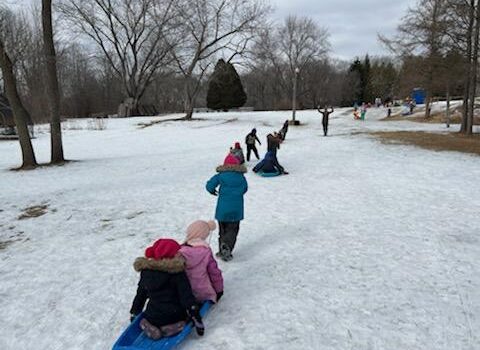 Education
Education
Joy and Outdoor Learning
Teacher burnout is a grave reality.
A recent Gallup poll noted that educators have the highest burnout rate in any industry within the United States, with 44% of K-12 teachers reporting feeling overly stressed, exhausted, and strained.

The statistics are alarming, but also not surprising.
Yet I believe there is hope for this ever-growing problem, and my own research projects indicate that outdoor learning is a promising pathway towards teacher joy.

But let me back up a few years.
In 2016 when I set out on my National Park adventure, I was a school teacher experiencing burnout who needed a year off to rediscover my career goals.
You can read about my park visit plan here.
Needless to say, I fell back in love with education, but particularly hands-on, experiential, place-based learning. I returned to teaching, working at a school that had an outdoor education program. During this time I received my PhD in science education with a focus in school-based outdoor learning. Now I am a full-time university professor who teaches teachers and does research within the field of outdoor ed.

Back to the problem of burnout.
In two separate recent qualitative studies, I interviewed multiple teachers around the country who regularly engage in outdoor education throughout the typical school day. My questions centered on their lived experiences and the ways in which they structure learning in an outdoor environment.

Although I wasn’t looking for it, the theme of joy kept popping up. Time and time again, my participants would use words like fun, joy, happiness, and other phrases which indicated their perception of their role as a teacher. This stands in contrast to the current trajectory of teacher burnout that is pervasive around the country.

Educators who regularly teach outside still face challenges and stressors in their role, but joyful experiences seem to be the norm, buoying their overall outlook of the profession.

As our society continues to shift and change, the field of education will feel the impact of policies, the economy, and cultural norms. I truly believe we need to be having more conversations about the mental health of our teachers and how to alleviate the rampant burnout within K-12 educators.

I am hopeful that as the field of outdoor learning continues to grow, there may just be a grassroots movement within education that values outdoor time as a contributor to the holistic wellbeing of both teachers and students.

In the meantime, let’s continue to support our teachers.
Find time to wonder.
And get outside as much as possible.
